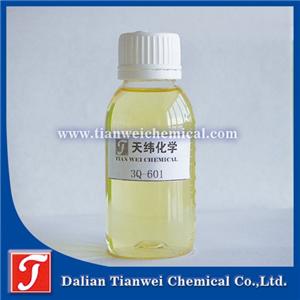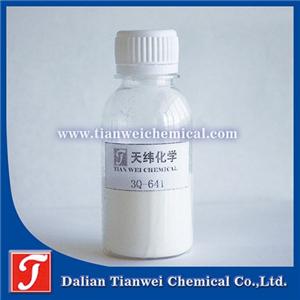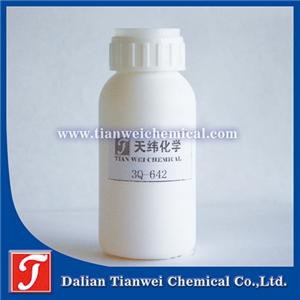Paper glue mold inhibitor: Provides long-lasting mold protection for paper products
Paper glue mold inhibitor: Provides long-lasting mold protection for paper products
During the production, transportation and storage of paper products, the problem of mold has always been a difficult issue plaguing the industry. Whether it is wrapping paper, gift boxes, books, archives, etc., once they get moldy, it not only affects their appearance but also may damage their functionality and safety, causing serious economic losses. Paper glue, as an indispensable bonding material in the production of paper products, its characteristic of being prone to mold further aggravates the severity of this problem. Against this backdrop, paper glue mold inhibitors emerged, providing an effective solution to the mold problem of paper products.
The reasons why paper glue is prone to mold
The reason why paper glue is prone to mold mainly lies in two factors: its composition and storage environment. In terms of composition, paper glue usually contains nutrients such as starch, protein and oil, which are precisely the "delicacies" needed for the growth and reproduction of mold. For instance, common glue is composed of polyvinyl alcohol, white latex, sodium stearate, talcum powder, urea, ethylene glycol, sucrose, flavoring, water, etc. Among them, components such as sucrose and protein provide rich nutritional sources for mold.
From the perspective of storage environment, paper glue faces many challenges during the storage process. On the one hand, the warehouse has poor air circulation and is damp, providing suitable temperature and humidity conditions for the growth of mold. On the other hand, during sea transportation, the large temperature difference between day and night makes it easy for condensation to form inside the container, further increasing the risk of the glue getting damp and moldy. Relevant surveys show that 46.8% of the factors causing mold in paper products are due to the glue used for lamination, which fully demonstrates the severity of the mold susceptibility of paper glue.
The working principle of paper glue Antibacterial agents
Paper glue mold inhibitor mainly achieves the purpose of mold prevention by inhibiting the growth and reproduction of mold. Take isothiazolinone compounds as an example. This is a broad-spectrum, highly efficient and low-toxicity industrial fungicide. It can break the bonds of proteins in bacteria and molds, rapidly and irreversibly inhibiting the growth of microorganisms, leading to the death of microbial cells. Meanwhile, isothiazolinone compounds also have extremely strong stability, are not easily affected by environmental factors, and can maintain the anti-mold performance of paper for a long time.
Different types of paper glue mold inhibitors have different mechanisms of action. For example, glue mold inhibitors made of 5-chloro-2-methyl-4-isothiazolin-3-one and 2-methyl-4-isothiazolin-3-one, when added to the glue, will form a protective cover, locking the glue molecules in the middle and wrapping the material, preventing mold from eroding the glue while not affecting the viscosity of the glue.
Types and characteristics of anti-mold agents for paper glue
At present, the common anti-mold agents for paper glue in the market mainly include organic, inorganic and natural biological types, etc.
Organic fungicides: such as organic nitrogen and sulfur compounds, organic halogenated compounds, etc., have the characteristics of broad-spectrum sterilization and high efficiency and rapidity. For instance, organic nitrogen-sulfur fungicides such as Fumeisuang and Kejundan can effectively inhibit the growth of various molds. However, some organic fungicides may have certain toxicity and have certain impacts on the environment and human health. When using them, the dosage and application method need to be strictly controlled.
Inorganic fungicides: such as copper, zinc and other compounds as well as nanomaterials, have the advantages of good stability and strong durability. They can function for a long time in paper glue and are not prone to decomposition and failure. However, the color of inorganic fungicides may have a certain impact on the appearance of paper products, and their cost is relatively high.
Natural biological fungicides: such as plant extracts, microbial metabolites, etc., have the advantages of being environmentally friendly and non-toxic. These fungicides are derived from natural substances, are friendly to the environment and human health, and meet the modern society's requirements for green environmental protection. However, the anti-mold effect of natural biological anti-mold agents may be relatively weak, and they need to be used in combination with other anti-mold agents to achieve the desired anti-mold effect.
The application scope and methods of anti-mold agents for paper glue
Paper glue mold inhibitors have extensive applications in multiple fields. In the packaging industry, it can be used to prevent the quality of packaging boxes, gift boxes, etc. from being affected due to moldy glue. In the book printing industry, it can prevent books from being damaged due to moldy glue and protect precious knowledge and cultural heritage. In the field of archive preservation, it can ensure the long-term preservation of archive paper and prevent the archives from losing their reference value due to mold.
Its main usage methods include the addition method and the soaking method. The addition method involves directly adding a certain proportion of fungicide to the glue, stirring it evenly, and then bonding the paper. For instance, when mixing glue, add a glue mold inhibitor at 1% to 2% of the glue's weight. After thorough stirring, it can be used. The soaking method involves placing paper or paper that has been coated with glue into a mixture of fungicides for a period of soaking treatment, allowing the fungicides to fully adsorb onto the surface and interior of the paper. The soaking time and temperature need to be adjusted according to different products and types of fungicides.
Practical application cases and effect evaluation
Take a certain packaging factory as an example. When using ordinary glue, the packaging boxes produced by this factory often get moldy, resulting in a persistently high return rate of the products. Later, the factory adopted glue with added anti-mold agents for glue for production. Add the fungicide at 1.5% of the glue weight, stir evenly and then use it for bonding the packaging box. After a period of production and sales, it was found that the mold growth rate of packaging boxes produced with anti-mold glue was significantly reduced, the product quality was significantly improved, customer satisfaction was greatly enhanced, and the economic benefits of the enterprise were also effectively improved.
To evaluate the effect of the anti-mold agent for paper glue, various methods can be adopted. Laboratory tests can observe the inhibitory effect of fungicides on mold by simulating different environmental conditions. For instance, place the glue samples with and without fungicides respectively in constant temperature and humidity chambers, set the temperature and humidity suitable for mold growth, and regularly observe the mold growth of the samples. On-site application assessment involves tracking and observing products treated with fungicides in an actual production environment, recording the mold growth rate and quality changes of the products. Through these evaluation methods, a comprehensive understanding of the anti-mold effect and stability of paper glue anti-mold agents can be achieved.




